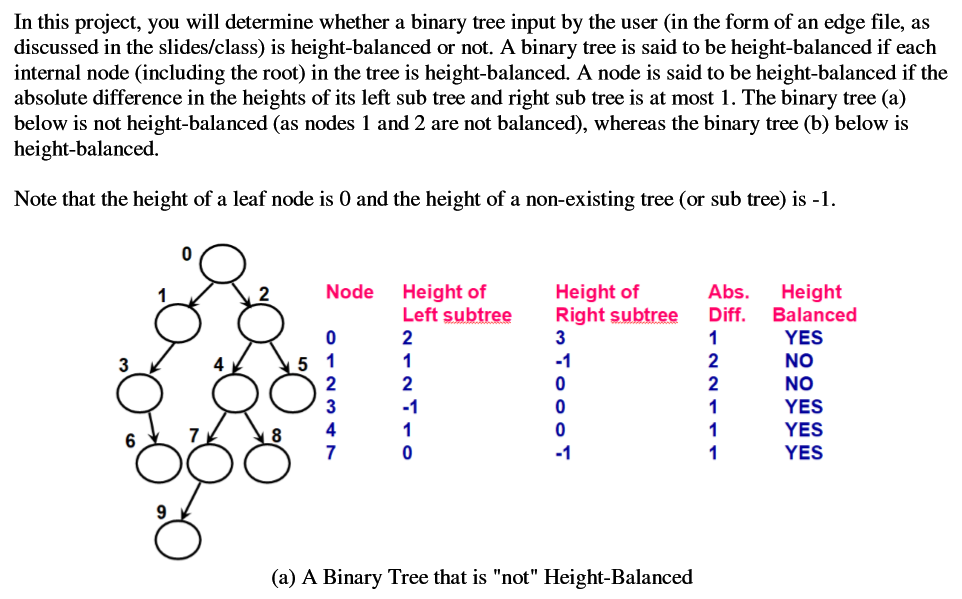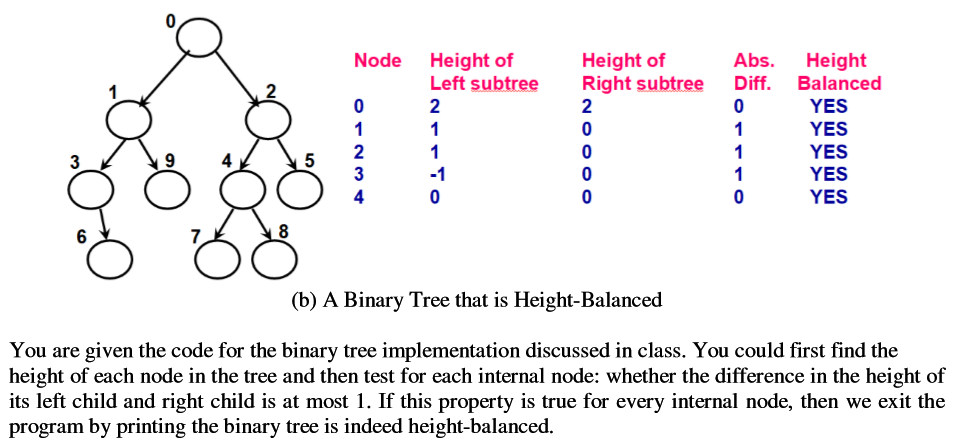Question
The code which is given: import java.io.*; import java.util.*; class BTNode{ private int nodeid; private int data; private int levelNum; private BTNode leftChildPtr; private BTNode




The code which is given: import java.io.*; import java.util.*;
class BTNode{
private int nodeid; private int data; private int levelNum; private BTNode leftChildPtr; private BTNode rightChildPtr;
public BTNode(){}
public void setNodeId(int id){ nodeid = id; }
public int getNodeId(){ return nodeid; }
public void setData(int d){ data = d; }
public int getData(){ return data; }
public void setLevelNum(int level){ levelNum = level; }
public int getLevelNum(){ return levelNum; }
public void setLeftChildPtr(BTNode ptr){ leftChildPtr = ptr; }
public void setRightChildPtr(BTNode ptr){ rightChildPtr = ptr; }
public BTNode getLeftChildPtr(){ return leftChildPtr; }
public BTNode getRightChildPtr(){ return rightChildPtr; }
public int getLeftChildID(){ if (leftChildPtr == null) return -1;
return leftChildPtr.getNodeId(); }
public int getRightChildID(){ if (rightChildPtr == null) return -1;
return rightChildPtr.getNodeId(); } }
class BinaryTree{
private int numNodes; private BTNode arrayOfBTNodes[];
public BinaryTree(int n){ numNodes = n; arrayOfBTNodes = new BTNode[numNodes];
for (int id = 0; id
} }
public void setLeftLink(int upstreamNodeID, int downstreamNodeID){ arrayOfBTNodes[upstreamNodeID].setLeftChildPtr(arrayOfBTNodes[downstreamNodeID]); }
public void setRightLink(int upstreamNodeID, int downstreamNodeID){ arrayOfBTNodes[upstreamNodeID].setRightChildPtr(arrayOfBTNodes[downstreamNodeID]); }
public void printLeafNodes(){
for (int id = 0; id
if (arrayOfBTNodes[id].getLeftChildPtr() == null && arrayOfBTNodes[id].getRightChildPtr() == null) System.out.print(id + " "); }
System.out.println(); }
public boolean isLeafNode(int nodeid){
if (arrayOfBTNodes[nodeid].getLeftChildPtr() == null && arrayOfBTNodes[nodeid].getRightChildPtr() == null) return true;
return false; }
public int getNodeHeight(int nodeid){
if (nodeid == -1) return -1;
if (isLeafNode(nodeid) ) return 0;
int leftChildID = arrayOfBTNodes[nodeid].getLeftChildID(); // -1 if not exist int rightChildID = arrayOfBTNodes[nodeid].getRightChildID(); // -1 if not exist
int heightOfLeftChild = getNodeHeight(leftChildID); int heightOfRightChild = getNodeHeight(rightChildID);
return Math.max(heightOfLeftChild, heightOfRightChild) + 1;
}
public int getTreeHeight(){ return getNodeHeight(0); }
public boolean checkHeightBalancedTree(){
// Implement this function to determine whether for each internal node, the absolute difference // between the height of the left child and the right child is at most 1. If it is true for each internal ndoe, the // binary tree is said to be height-balanced. Even if one internal node is not height-balanced, the // whole binary tree is considered not height-balanced.
}
}
class BinaryTreeImplementation{
public static void main(String[] args){
try{
Scanner input = new Scanner(System.in);
String filename; System.out.print("Enter a file name: "); filename = input.next();
int numNodes; System.out.print("Enter number of nodes: "); numNodes = input.nextInt();
BinaryTree binaryTree = new BinaryTree(numNodes);
FileReader fr = new FileReader(filename); BufferedReader br = new BufferedReader(fr);
String line = null;
while ( (line = br.readLine()) != null){
StringTokenizer stk = new StringTokenizer(line, ",: ");
int upstreamNodeID = Integer.parseInt(stk.nextToken());
int childIndex = 0;
while (stk.hasMoreTokens()){
int downstreamNodeID = Integer.parseInt(stk.nextToken());
if (childIndex == 0 && downstreamNodeID != -1) binaryTree.setLeftLink(upstreamNodeID, downstreamNodeID);
if (childIndex == 1 && downstreamNodeID != -1) binaryTree.setRightLink(upstreamNodeID, downstreamNodeID);
childIndex++;
}
}
System.out.println("Tree Height: " + binaryTree.getTreeHeight() );
if (binaryTree.checkHeightBalancedTree()) System.out.println("The tree is height balanced.."); else System.out.println("The tree is not height balanced..");
} catch(Exception e){e.printStackTrace();}
} }
In this project, you will determine whether a binary tree input by the user (in the form of an edge file, a:s discussed in the slides/class) is height-balanced or not. A binary tree is said to be height-balanced if each internal node (including the root) in the tree is height-balanced. A node is said to be height-balanced if the absolute difference in the heights of its left sub tree and right sub tree is at most 1. The binary tree (a) below is not height-balanced (as nodes 1 and 2 are not balanced), whereas the binary tree (b) below is height-balanced. Note that the height of a leaf node is 0 and the height of a non-existing tree (or sub tree) is -1. Node Height of Height of Abs. Height Left subtree Right subtree Diff. Balanced 2 YES No No YES YES YES 2 2 3 2 2 4 (a) A Binary Tree that is "not" Height-BalancedStep by Step Solution
There are 3 Steps involved in it
Step: 1

Get Instant Access to Expert-Tailored Solutions
See step-by-step solutions with expert insights and AI powered tools for academic success
Step: 2

Step: 3

Ace Your Homework with AI
Get the answers you need in no time with our AI-driven, step-by-step assistance
Get Started


